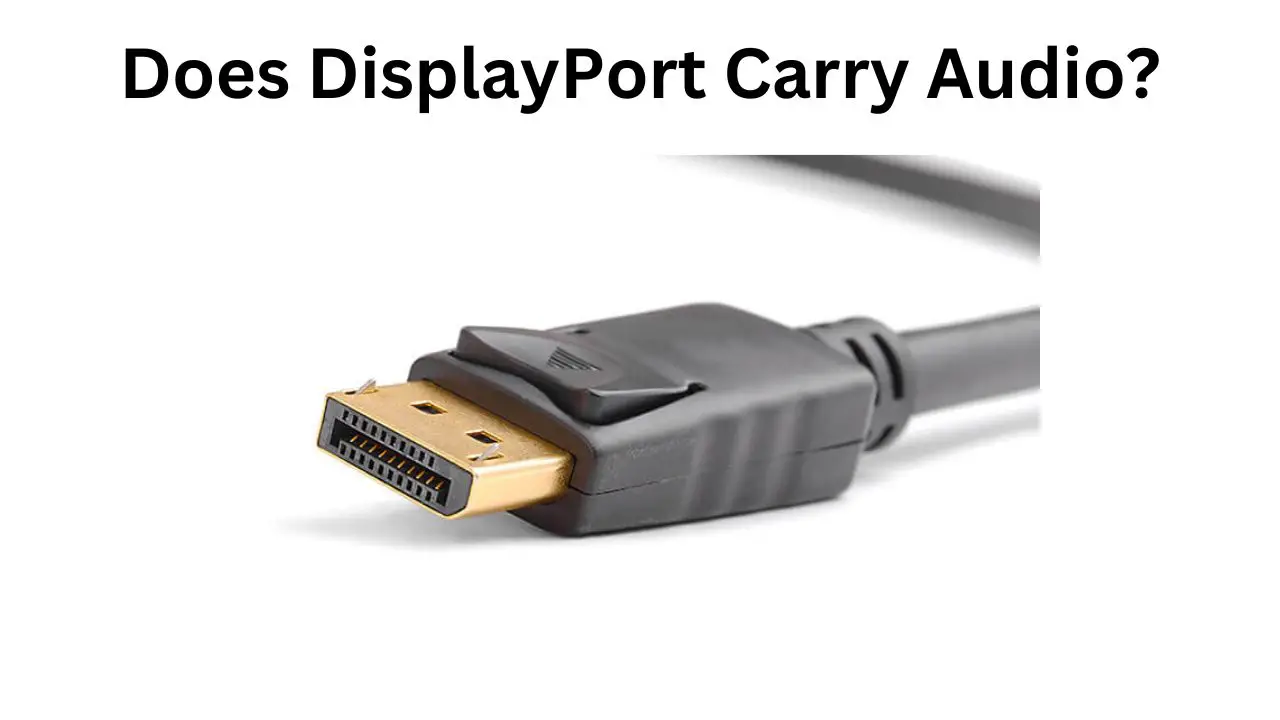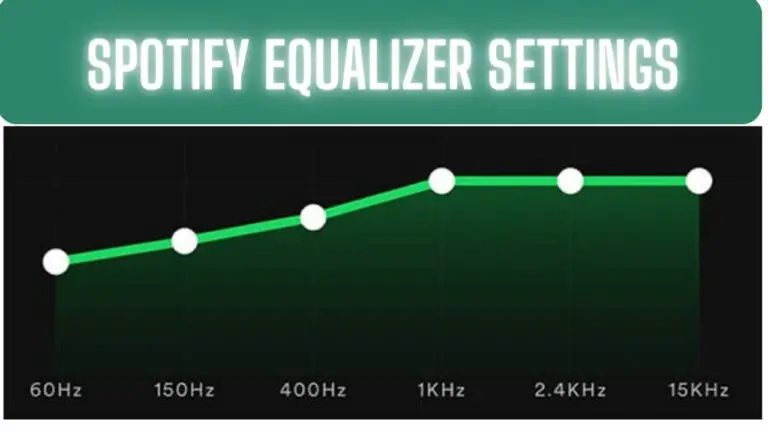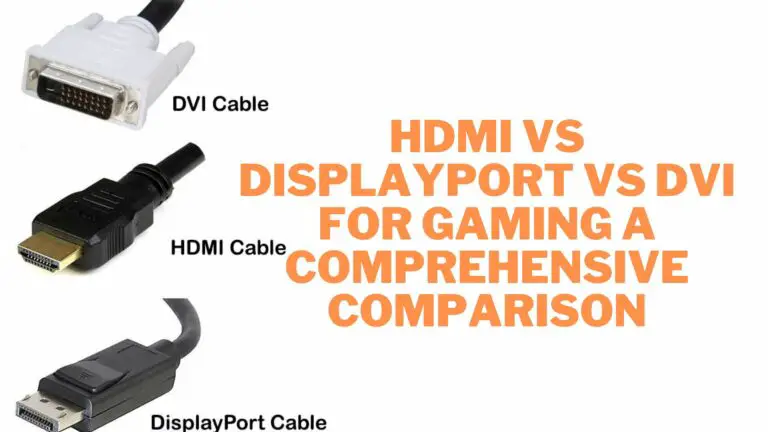Does DisplayPort Carry Audio? DisplayPort Explained
Introduction
In the world of digital connectivity, DisplayPort has emerged as a versatile interface for transmitting high-quality video and audio signals between devices. While many are familiar with its prowess in delivering crisp visuals, there’s often confusion surrounding its ability to carry audio. In this article, we’ll delve into the capabilities of DisplayPort when it comes to audio transmission, unraveling its potential and dispelling any misconceptions along the way. Join us as we explore the intricate workings of DisplayPort and its role in delivering immersive audio experiences.
Understanding DisplayPort
DisplayPort, abbreviated as DP, is a digital display interface primarily used to connect various devices such as computers, monitors, TVs, and projectors. Developed by the Video Electronics Standards Association (VESA), DisplayPort is known for its high bandwidth and versatility, making it suitable for a wide range of applications.
Key features of DisplayPort include:
- High Bandwidth: DisplayPort offers high data transfer rates, allowing for the transmission of large amounts of data, including high-definition video and audio signals.
- Versatility: DisplayPort supports various video and audio formats, making it compatible with different display technologies such as LCD, OLED, and HDR.
- Multiple Displays: DisplayPort allows for the daisy-chaining of multiple displays from a single DisplayPort output, enabling multi-monitor setups without the need for additional cables or adapters.
- Audio Support: DisplayPort can carry both video and audio signals, making it a convenient choice for connecting devices such as monitors with built-in speakers or external audio systems.
- Long Cable Lengths: DisplayPort cables can transmit signals over long distances without experiencing signal degradation, making them suitable for use in professional environments and home theater setups.
Overall, DisplayPort is a robust and flexible display interface that offers high performance and compatibility with a wide range of devices and display technologies. Its ability to transmit both video and audio signals makes it a popular choice for connecting modern digital devices.
Audio Support in DisplayPort
DisplayPort supports audio transmission alongside video, allowing users to enjoy synchronized audio-visual experiences through a single cable connection. This capability is particularly useful in setups where audio is integrated into the display device, such as monitors with built-in speakers or home theater systems.
Here are some key points regarding audio support in DisplayPort:
- Audio Formats: DisplayPort can carry various audio formats, including uncompressed LPCM (Linear Pulse Code Modulation), compressed audio formats such as Dolby Digital and DTS, and high-definition audio formats like Dolby TrueHD and DTS-HD Master Audio.
- Channel Support: DisplayPort supports multi-channel audio, enabling the transmission of surround sound formats like 5.1 and 7.1 audio. This allows users to experience immersive audio playback in applications such as gaming, movies, and multimedia content.
- Sample Rates: DisplayPort supports a wide range of audio sample rates, including standard rates such as 44.1 kHz and 48 kHz, as well as higher rates for high-definition audio formats.
- Bit Depth: DisplayPort can transmit audio with various bit depths, ranging from standard 16-bit audio to higher-quality 24-bit audio, ensuring accurate reproduction of audio signals with greater dynamic range and fidelity.
- Embedded Audio: In DisplayPort connections, audio data is embedded within the video stream, allowing for synchronized transmission of both audio and video signals over a single cable. This simplifies cable management and reduces clutter in setups with multiple devices.
Overall, DisplayPort’s support for audio transmission enhances its versatility and usability in a wide range of applications, including gaming, multimedia content consumption, and professional audio-visual production. Whether used in home entertainment systems or professional workstations, DisplayPort offers reliable audio performance alongside high-quality video transmission.
How DisplayPort Carries Audio
DisplayPort carries audio signals using a method known as embedded audio. In this approach, audio data is multiplexed with the video signal and transmitted over the same DisplayPort cable, allowing for synchronized audio-visual playback.
Here’s a breakdown of how DisplayPort carries audio:
- Audio Data Multiplexing: Within a DisplayPort connection, audio data is multiplexed or combined with the video data. This means that both audio and video signals share the same data stream, allowing them to be transmitted simultaneously.
- Audio Packetization: Audio data is packetized into specific data packets within the DisplayPort stream. These packets contain information about the audio format, sample rate, bit depth, and other relevant audio parameters.
- Transport Stream: The audio packets are then embedded within the DisplayPort transport stream, which carries both audio and video data from the source device to the display device.
- Receiver Decoding: At the receiving end, such as a monitor or display device, the DisplayPort receiver decodes the audio packets and separates them from the video data. The audio data is then processed and sent to the display’s speakers or external audio output.
- Synchronization: Since audio and video signals are transmitted together within the DisplayPort stream, they remain synchronized throughout the transmission process. This ensures that audio and video playback are in perfect alignment, providing a seamless multimedia experience.
Overall, the embedded audio approach used by DisplayPort simplifies audio-visual transmission by allowing both audio and video signals to be carried over a single cable. This method ensures efficient data transmission and synchronized playback, making DisplayPort a versatile solution for connecting devices in various applications.
Compatibility with Audio Devices
DisplayPort’s compatibility with audio devices depends on the specific hardware and software implementations of the devices involved. Here are some key points regarding compatibility with audio devices:
- Monitors with Built-in Speakers: Many monitors come equipped with built-in speakers, allowing them to receive audio signals directly from a connected source device via DisplayPort. These monitors typically support audio playback through their built-in speakers without requiring additional audio equipment.
- External Audio Systems: DisplayPort can also be connected to external audio systems such as speakers, soundbars, or AV receivers to enhance audio playback. This is achieved by routing the audio signal from the source device (e.g., computer or media player) through DisplayPort to the external audio system for amplification and playback.
- Headphones and Headsets: DisplayPort connections are not typically used to directly connect headphones or headsets, as these devices are designed to receive audio signals through headphone jacks or USB connections. However, if a monitor or display device with a DisplayPort connection includes a headphone jack or audio passthrough feature, headphones or headsets can be connected indirectly through the display.
- Audio Interfaces and DACs: DisplayPort connections can be used with external audio interfaces or digital-to-analog converters (DACs) to improve audio quality or provide additional audio connectivity options. These devices typically connect to the source device via DisplayPort and then route audio signals to speakers, headphones, or other audio equipment.
- Operating System Compatibility: The compatibility of DisplayPort with audio devices may also depend on the operating system’s audio settings and drivers. It’s essential to ensure that the operating system recognizes the audio output devices connected via DisplayPort and is configured to route audio signals correctly.
Overall, DisplayPort is compatible with a wide range of audio devices, including monitors with built-in speakers, external audio systems, headphones, headsets, audio interfaces, and DACs. By leveraging DisplayPort’s audio capabilities, users can enjoy high-quality audio playback and enhanced multimedia experiences across various devices and setups.
Benefits of Audio over DisplayPort
Audio over DisplayPort offers several benefits that enhance the multimedia experience and simplify audio-visual setups. Here are some key advantages:
- Single Cable Solution: One of the significant advantages of audio over DisplayPort is that it allows for the transmission of both video and audio signals over a single cable. This reduces cable clutter and simplifies connectivity, making it easier to set up and manage audio-visual systems.
- High-Quality Audio: DisplayPort supports high-definition audio formats with multi-channel audio capabilities, allowing for immersive sound experiences. Whether it’s gaming, watching movies, or listening to music, users can enjoy rich, detailed audio reproduction.
- Synchronized Audio and Video: By embedding audio within the DisplayPort stream, audio and video signals remain synchronized throughout transmission. This ensures that audio playback is perfectly aligned with video playback, eliminating any potential lip-sync issues.
- Flexibility and Compatibility: DisplayPort is widely supported across various devices, including computers, monitors, TVs, and projectors. This broad compatibility allows users to connect DisplayPort-enabled devices seamlessly and enjoy audio playback without compatibility issues.
- Enhanced Multimedia Experience: Audio over DisplayPort enhances the overall multimedia experience by delivering high-quality audio alongside crisp, high-resolution video. Whether it’s gaming, streaming content, or professional audio-visual work, users can immerse themselves in rich audio-visual content.
- Reduced Latency: DisplayPort’s high bandwidth and efficient data transmission contribute to low latency audio delivery. This is particularly important in applications where real-time audio processing is critical, such as gaming and live broadcasting.
- Future-Proofing: DisplayPort continues to evolve with new versions and updates, ensuring compatibility with the latest audio technologies and standards. This future-proofing ensures that users can enjoy high-quality audio experiences with DisplayPort-enabled devices for years to come.
Overall, audio over DisplayPort offers a range of benefits that contribute to a seamless and immersive multimedia experience. Whether it’s for entertainment, productivity, or creative work, audio over DisplayPort enhances audio playback and complements high-quality video transmission for a truly immersive audio-visual experience.
Setting up Audio with DisplayPort
Setting up audio with DisplayPort is a straightforward process, but it may vary slightly depending on the devices you’re connecting. Here’s a general guide to help you set up audio with DisplayPort:
- Check Device Compatibility: Ensure that both your source device (e.g., computer or media player) and your display device (e.g., monitor or TV) support audio over DisplayPort. Most modern devices are equipped with this capability, but it’s always good to double-check the specifications.
- Connect the DisplayPort Cable: Use a DisplayPort cable to connect your source device to your display device. Make sure to use a cable that supports audio transmission if you intend to use audio over DisplayPort.
- Configure Audio Settings (Source Device):
- On your source device (e.g., computer), open the audio settings menu. This can usually be found in the system settings or control panel.
- Select the audio output device as the DisplayPort connection. It may be listed as the specific monitor or display device you’re using.
- Configure Audio Settings (Display Device):
- If your display device has built-in speakers or audio output ports (e.g., headphone jack), check its audio settings menu.
- Ensure that the audio input source is set to DisplayPort or HDMI (depending on the terminology used by your display device).
- Adjust volume levels and audio settings as needed.
- Test Audio Playback: Play a test audio file or video on your source device to confirm that audio is being transmitted correctly through the DisplayPort connection. Adjust volume levels on both the source device and the display device as needed.
- Troubleshoot Any Issues: If you encounter any audio playback issues, double-check the cable connections, audio settings on both devices, and ensure that all drivers and software are up to date. You may also need to consult the user manuals or support resources for your devices for troubleshooting guidance.
- Enjoy Audio Playback: Once audio is successfully set up, you can enjoy high-quality audio playback through your display device’s speakers or connected audio equipment.
By following these steps, you should be able to set up audio with DisplayPort and enjoy synchronized audio-visual experiences seamlessly. If you encounter any difficulties, refer to the user manuals or support resources for your devices for further assistance.
Troubleshooting Audio Issues
Troubleshooting audio issues with DisplayPort can help resolve common problems and ensure smooth playback. Here are some steps you can take to troubleshoot audio issues:
- Check Cable Connections: Ensure that the DisplayPort cable is securely connected to both your source device (e.g., computer) and your display device (e.g., monitor). A loose connection can cause audio interruptions or no audio output at all.
- Verify Audio Output Settings (Source Device):
- Check the audio output settings on your source device (e.g., computer).
- Ensure that the audio output is set to the DisplayPort connection. This may involve selecting the specific monitor or display device in the audio settings menu.
- Verify Audio Input Settings (Display Device):
- If your display device has built-in speakers or audio output ports, check its audio input settings.
- Ensure that the audio input source is set to DisplayPort or HDMI (depending on the terminology used by your display device).
- Test Audio Playback with Different Content: Try playing different audio files or videos to see if the issue persists across different types of content. This can help determine if the problem is specific to certain files or applications.
- Adjust Volume Levels: Check the volume settings on both your source device and your display device. Ensure that the volume is not muted or set too low.
- Update Drivers and Software: Make sure that your device’s audio drivers and firmware are up to date. Check the manufacturer’s website for any available updates and install them as needed.
- Restart Devices: Sometimes, simply restarting your source device and display device can resolve audio issues. Turn off both devices, wait for a few seconds, and then turn them back on.
- Try Different Ports and Cables: If possible, try connecting your source device to a different DisplayPort port on your display device or using a different DisplayPort cable. This can help determine if the issue is related to a specific port or cable.
- Check for Interference: Ensure that there are no sources of electromagnetic interference near your devices, as this can affect audio transmission. Keep your devices away from sources of electromagnetic interference such as wireless routers, microwave ovens, and other electronic devices.
- Reset Settings: If you’ve made any changes to audio settings or configurations, try resetting them to their default settings. This can help eliminate any misconfigurations that may be causing audio issues.
If you’ve tried these troubleshooting steps and are still experiencing audio issues with DisplayPort, you may need to consult the user manuals or contact technical support for further assistance.
Comparison with Other Audio Interfaces
When comparing audio interfaces like DisplayPort with other options, such as HDMI, DVI, and analog audio connections, several factors come into play. Here’s a comparison highlighting the key differences:
- Audio Quality: DisplayPort and HDMI both support high-quality digital audio transmission, including multi-channel audio formats like Dolby Digital and DTS. DVI and analog audio connections typically offer lower audio quality compared to digital interfaces.
- Single Cable Solution: DisplayPort and HDMI provide a single cable solution for both video and audio transmission, simplifying connectivity and reducing cable clutter. DVI requires a separate audio cable for audio transmission, while analog audio connections require dedicated audio cables.
- Bandwidth and Data Transfer: DisplayPort and HDMI offer higher bandwidth and data transfer rates compared to DVI and analog audio connections. This allows for higher resolution video and audio streams, as well as support for advanced audio formats.
- Compatibility and Flexibility: DisplayPort and HDMI are widely supported across various devices, including computers, monitors, TVs, and audio equipment. DVI is less common in newer devices but is still found in some monitors and graphics cards. Analog audio connections are compatible with a wide range of audio devices but may suffer from interference and signal degradation over longer cable lengths.
- Synchronization and Lip-Sync Issues: DisplayPort and HDMI embed audio within the video stream, ensuring synchronized audio and video playback. This eliminates potential lip-sync issues commonly associated with separate audio and video connections. DVI and analog audio connections may require manual synchronization adjustments to align audio and video playback.
- Power and Control: DisplayPort supports bi-directional data transfer and power delivery, allowing for additional features like device control and daisy-chaining of multiple displays. HDMI also supports some of these features, although the extent may vary depending on the version. DVI and analog audio connections do not offer these advanced capabilities.
- Cost and Availability: DisplayPort and HDMI cables and devices are readily available and competitively priced, making them popular choices for audio-visual setups. DVI and analog audio connections may be less common in newer devices and may require additional cables or adapters for audio transmission.
Overall, DisplayPort and HDMI offer the most advanced audio capabilities, including high-quality digital audio transmission, synchronized audio and video playback, and support for advanced features like power delivery and device control. However, the choice of audio interface ultimately depends on the specific requirements of your audio-visual setup, device compatibility, and personal preferences.
Future Trends and Developments
Future trends and developments in audio interfaces like DisplayPort are likely to focus on enhancing performance, increasing compatibility, and introducing new features to meet evolving user needs. Some potential trends and developments to watch for include:
- Higher Resolutions and Refresh Rates: As display technology continues to advance, audio interfaces like DisplayPort may support even higher resolutions, such as 8K and beyond, along with higher refresh rates for smoother video playback.
- Improved Audio Formats and Surround Sound: Future iterations of DisplayPort may introduce support for advanced audio formats and surround sound technologies, further enhancing the immersive audio-visual experience.
- Enhanced Power Delivery and Device Control: DisplayPort could incorporate more advanced power delivery capabilities, allowing devices to charge faster and support additional features like device control and management.
- Increased Bandwidth and Data Transfer Rates: With the growing demand for high-definition multimedia content, future versions of DisplayPort may offer even higher bandwidth and data transfer rates to accommodate larger video and audio streams.
- Adoption of New Connectivity Standards: DisplayPort may integrate with emerging connectivity standards like USB4 and Thunderbolt to provide even greater versatility and compatibility with a wide range of devices and peripherals.
- Improved Cable and Connector Designs: Future DisplayPort cables and connectors may feature enhancements in design, durability, and flexibility to meet the demands of modern audio-visual setups and ensure reliable connectivity.
- Integration with Wireless Technologies: As wireless technology continues to advance, future DisplayPort implementations may incorporate wireless audio transmission capabilities, reducing the need for physical cables and adapters.
- Smart and Adaptive Features: DisplayPort could incorporate smart and adaptive features that optimize audio and video performance based on the connected devices and usage scenarios, providing a seamless and user-friendly experience.
- Enhanced Security and Content Protection: With the increasing importance of content protection and security, future DisplayPort standards may include improved encryption and digital rights management (DRM) features to safeguard multimedia content.
Overall, future trends and developments in audio interfaces like DisplayPort are expected to focus on delivering higher performance, increased versatility, and enhanced user experiences to meet the evolving demands of multimedia content consumption and production. Keep an eye on industry announcements and advancements to stay informed about the latest developments in audio interface technology.
Does DisplayPort Carry Audio FAQs
- Does DisplayPort carry audio?
- Yes, DisplayPort supports the transmission of both video and audio signals. It can carry high-quality digital audio alongside video signals over the same cable.
- What types of audio can DisplayPort carry?
- DisplayPort can carry various types of audio formats, including stereo, multi-channel, and surround sound formats like Dolby Digital and DTS-HD Master Audio.
- Do I need a separate cable for audio with DisplayPort?
- No, you do not need a separate cable for audio when using DisplayPort. Audio is transmitted alongside the video signal through the DisplayPort cable.
- Can I adjust audio settings with DisplayPort?
- Yes, you can adjust audio settings for devices connected via DisplayPort through your computer’s or display device’s audio settings menu. This allows you to control volume levels, audio output sources, and other audio-related settings.
- Do all DisplayPort devices support audio?
- Most modern DisplayPort devices support audio transmission, including computers, monitors, TVs, and audio equipment. However, it’s essential to check the specifications of your devices to ensure audio compatibility.
- What should I do if I’m not getting audio with DisplayPort?
- If you’re not getting audio with DisplayPort, check the audio output settings on your source device (e.g., computer) and display device (e.g., monitor or TV). Ensure that the audio output source is set to DisplayPort or HDMI (if using a DisplayPort to HDMI adapter). You should also verify that the DisplayPort cable is securely connected and that the volume levels are adjusted appropriately.
- Can I use DisplayPort for audio-only connections?
- While DisplayPort is primarily designed for transmitting both video and audio signals, you can use it for audio-only connections if needed. However, HDMI or other dedicated audio interfaces may be more suitable for audio-only applications.
- Is DisplayPort audio better than HDMI audio?
- Both DisplayPort and HDMI support high-quality digital audio transmission. The choice between DisplayPort and HDMI audio may depend on factors such as device compatibility, available ports, and specific audio requirements.
Conclusion
In conclusion, audio interfaces like DisplayPort play a crucial role in transmitting high-quality audio alongside video signals, facilitating immersive audio-visual experiences across a wide range of devices. DisplayPort offers advanced features such as high bandwidth, synchronized audio and video playback, and support for high-resolution audio formats, making it a popular choice for connecting multimedia devices.
Throughout this guide, we’ve explored the fundamentals of DisplayPort audio, including its capabilities, compatibility, and advantages over other audio interfaces. We’ve discussed how to set up audio with DisplayPort, troubleshoot common issues, and compared DisplayPort with other audio interfaces like HDMI, DVI, and analog connections.
Looking ahead, we anticipate continued advancements in DisplayPort technology, including support for higher resolutions, improved audio formats, enhanced power delivery, and integration with emerging connectivity standards. These developments will further elevate the audio-visual experience and enable users to enjoy immersive multimedia content across a diverse range of devices and platforms.
As audio technology continues to evolve, it’s essential to stay informed about the latest trends and developments in audio interfaces like DisplayPort. By understanding the capabilities and potential applications of DisplayPort audio, users can make informed decisions when setting up audio-visual systems and enjoy the full benefits of modern multimedia technology.







